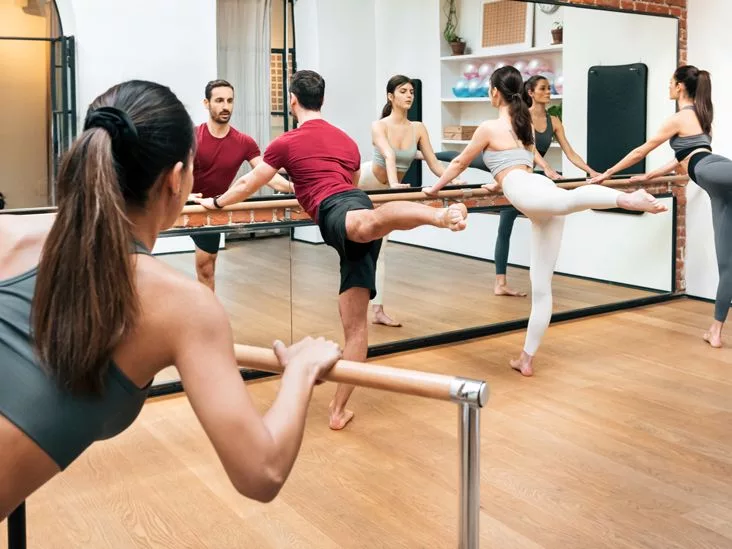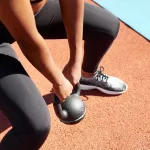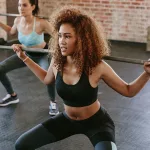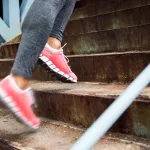Okay, picture this: you’re standing in a studio, palms lightly resting on a sturdy rail, and you’re moving in tiny, controlled pulses. In just 30 minutes you’ve tightened your core, stretched your hips, and walked out with noticeably better posture—no heavy weights, no pounding, and the whole thing feels almost too easy, right? That’s the magic of barre, and in the next few minutes I’m going to give you the straight‑up low‑impact benefits, the few risks, and a quick starter guide so you can decide if it’s worth a try today.
I’ll break down the science, sprinkle in a couple of real‑world anecdotes, and hand you actionable tips you can test right now. No fluff, just the info you asked for—and maybe a laugh or two along the way.
What Makes Barre Different?
How does barre blend ballet, Pilates & yoga?
Barre takes the elegant alignment of ballet, the core‑centric focus of Pilates, and the breath awareness of yoga, then packages everything into a low‑impact, high‑rep routine. The ballet barre gives you a solid anchor for balance, while Pilates‑style isometric holds and yoga‑like stretches keep the joints happy. The result is a workout that feels graceful, yet it still challenges every major muscle group.
Why is it considered a low‑impact workout?
Because the movements are small—often just one‑inch pulses—your joints never experience the big, jarring forces you get from running or heavy deadlifts. Instead, you’re using your own body weight and light props (think 1‑2 lb hand weights or a resistance band). As a result, the impact on knees, hips, and spine stays minimal, making barre ideal for anyone who wants a solid workout without the wear‑and‑tear.
Quick Comparison: Barre vs. Traditional Strength vs. Cardio
| Aspect | Barre | Strength Training | Cardio (Running) |
|---|---|---|---|
| Reps & Load | High reps, light weight | Low reps, heavy weight | Continuous movement, body weight |
| Joint Stress | Low | Moderate‑High | Moderate‑High |
| Equipment | Barre, small props | Bars, dumbbells, machines | None (just shoes) |
| Primary Focus | Alignment, endurance, flexibility | Strength, hypertrophy | Cardiovascular endurance |
Who invented modern barre?
It all started with Lotte Berk, a professional ballerina who injured her back in the 1950s. While rehabbing, she married ballet technique with therapeutic exercises—creating the first structured barre class. Today, studios worldwide still echo her vision: a graceful, therapeutic workout that anyone can do.
Core Benefits Explained
What are the top five physical benefits of barre?
Here’s the cheat‑sheet you can remember in a flash:
- Improved Posture: Repeating upright, core‑engaged positions trains the upper back and shoulders to stay open.
- Core & Pelvic‑Floor Strength: The constant “barre tuck” (posterior pelvic tilt) forces the deep abdominal and pelvic‑floor muscles to fire.
- Muscular Endurance: High‑rep, isometric pulses keep muscles under tension for longer, building stamina without bulk.
- Flexibility & Range of Motion: Between sets you stretch, which gradually lengthens tight muscles, especially in the hips and hamstrings.
- Bone Density Boost: Weight‑bearing moves (pliés, relevés) stimulate bone‑forming cells—great news for anyone worried about osteoporosis.
How does barre improve posture?
Every class begins with a focus on spinal alignment. By holding the barre, you’re forced to keep a neutral spine, engage the core, and avoid slouching. Over weeks, these micro‑adjustments turn into a habit you’ll carry off the mat—think taller, more confident walk, and fewer nagging back aches.
Can barre help with weight management?
While it’s not a high‑intensity cardio blast, barre still burns calories—roughly 200‑400 kcal per 45‑minute session, depending on intensity. More importantly, the endurance work builds lean muscle, which in turn raises your resting metabolic rate. Pair barre with a balanced diet, and you’ll notice gradual, sustainable weight loss.
Why is barre good for pelvic‑floor health?
Barre exercises repeatedly engage the deep pelvic‑floor muscles through controlled tucks and pulses. A 2025 study found that just ten Pure Barre classes over two months significantly reduced urinary incontinence symptoms and improved sexual function according to Healthline. If you’ve ever felt that “leakage” after a sneeze, those barre moves could be a game‑changer.
Does barre boost mental wellbeing?
There’s a reason people call it “moving meditation.” The rhythmic, low‑impact nature reduces cortisol (the stress hormone) while the focus on breath and alignment triggers a calm, almost zen‑like state. Plus, seeing yourself get stronger—whether it’s holding a plank a few seconds longer or straightening your spine—gives a tangible confidence boost.
Who Should Try Barre?
Is barre safe for injury‑recovery or seniors?
Absolutely—provided the class tailors the intensity. Because the moves are low‑impact and you can adjust the range of motion, many physical therapists prescribe barre for post‑injury rehabilitation. Seniors appreciate the balance work without the fear of falling from high‑impact cardio.
How to choose a beginner‑friendly class?
Look for studios advertising “Barre Light” or “Beginner” in the title. These classes usually:
- Use a simple, sturdy rail (or even a wall) instead of a full ballet barre.
- Offer props like light hand weights and resistance bands.
- Focus heavily on proper alignment and cueing.
First‑Timer Checklist
| Item | Why It Matters |
|---|---|
| Form‑fitting leggings & tank | Allows instructor to see your alignment. |
| Grip‑sock shoes | Prevents slipping on the floor. |
| Water bottle | Stay hydrated during the sweaty pulses. |
| Positive mindset | Barre is as mental as it is physical. |
Real‑world anecdote: Maria’s comeback
My friend Maria, a former avid runner, injured her knee during a trail race. Her physio suggested low‑impact barre to rebuild quad and glute strength without aggravating the joint. After six weeks of twice‑weekly barre, she reported less knee pain, a more upright gait, and—bonus—she could finally touch her toes again. Her story illustrates how barre can be a gentle bridge back to more demanding activities.
Risks & How to Avoid Them
Common injuries in barre
Even a low‑impact workout can trip you up if you ignore form. The most reported complaints are:
- Hip flexor strain from over‑extending in lunges.
- Wrist pain from improper hand placement on the barre.
- Lower‑back soreness when the core isn’t fully engaged.
How to recognize when a move is “too far”
If you feel sharp pain (not the good‑burn), your form is breaking down, or you’re unable to maintain a neutral spine, it’s time to modify or stop. Listening to your body is the first line of safety.
Symptom → Action Table
| Symptom | Immediate Action |
|---|---|
| Sharp hip pain | Reduce range, keep weight on supporting leg; consult PT if persists. |
| Wrist tingling | Adjust hand grip, use a softer mat; rest 24 hrs. |
| Low‑back ache | Engage core tighter, shorten lever arm; seek professional cue. |
Protective strategies
The American Council on Exercise (ACE) recommends alternating barre with other modalities (like a short jog or swim) to avoid plateaus and overuse. Warm up with gentle dynamic stretches, keep shoulders relaxed, and remember the “barre tuck”—tucking the tailbone, tightening the abdominals, and squeezing the glutes—every time you’re on the rail. These simple habits eliminate most of the typical risks.
Starter Routine Sample
5‑move beginner sequence
Ready to try a quick at‑home version? All you need is a sturdy chair or countertop for the “barre.” Perform each move for 12 pulses, then rest 30 seconds before moving to the next.
- Plié Squat (Second Position)—feet wide, toes turned out, sink low, pulse up.
- Barre Tuck Plank—hands on the rail, engage core, hold 30 seconds.
- Side‑Leg Lift—standing with one hand on the rail, lift outer leg, pulse.
- Floor Bridge Pulse—lie on back, feet on floor, lift hips, pulse.
- Arm Reach with Light Weights—hold 1‑lb dumbbells, press overhead, pulse.
How to progress after two weeks
Once the routine feels easy, add a second set, increase pulses to 15, or incorporate light ankle weights. You can also swap the sturdy rail for an actual ballet barre when you feel confident.
Expert Tips & Resources
Insights from a certified barre instructor
Gisela Bouvier, RDN and certified barre trainer, says, “Focus on quality of movement, not quantity. Small, controlled pulses create more muscle fiber recruitment than big, sloppy swings.” She also stresses the importance of breathing—inhale during the low phase, exhale on the pulse—to keep the core engaged.
Recommended apps and online platforms
If you can’t make it to a studio, these digital options keep you moving:
| Platform | Free/Paid | Key Features |
|---|---|---|
| BarreFit | Free basics, paid premium | 30‑min beginner classes, no equipment needed. |
| Tempo Barre | Paid subscription | Live instructors, progression tracking, music playlists. |
| YouTube – Pure Barre Channel | Free | Short tutorials, focus on core and glutes. |
Further reading
For a deeper dive into the science of bone density gains from barre, see this peer‑reviewed study according to the Encyclopedia of Behavioral Medicine. It explains why the weight‑bearing pliés are especially beneficial for post‑menopausal women.
Conclusion
Barre delivers a surprisingly comprehensive package: stronger core, better posture, toned limbs, and even pelvic‑floor health—all without the joint pounding of high‑impact training. The few risks are easy to manage with proper form and a sensible class choice, especially for beginners. Whether you’re rehabbing an injury, looking for a low‑impact calorie burn, or just craving a fresh way to move, a twice‑weekly barre routine can slip into almost any lifestyle.
Ready to give it a try? Grab a sturdy rail, follow the starter sequence above, and notice how quickly those benefits start to show up. What’s your favorite barre move so far? Share your experiences in the comments—I’d love to hear how barre is changing your fitness story.


















Leave a Reply
You must be logged in to post a comment.